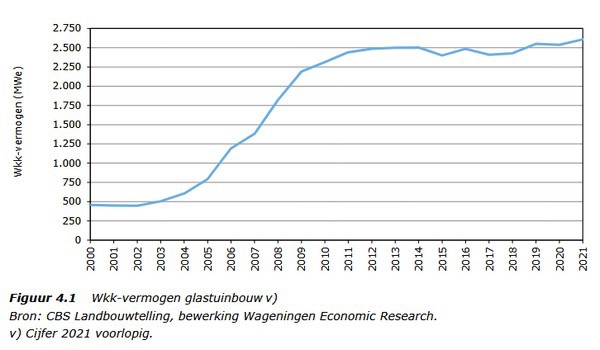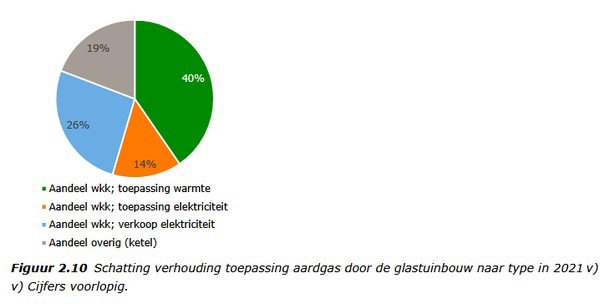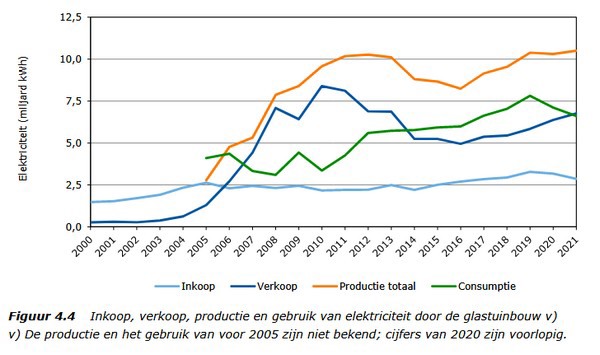The annual greenhouse energy monitor shows that, in 2021, Dutch greenhouse horticulture CO2 emissions rose by 0.35 Mton to 6.5 Mton. That was after several years of flat trends and an increase in 2019 and 2020. Energy use per m2 actually decreased to 45.2 kg per m2.
This rise in total emissions is mainly due to the increased agricultural acreage, more electricity sales, and higher outdoor temperatures. The researchers point out that most of that upsurge is thus due to factors over which the greenhouse industry has less control. The lower per m2 emissions are thanks to more renewable energy being used and more non-renewable heat being bought. Plus, energy was being used more efficiently for cultivation.
Wageningen Economic Research publishes this monitor. Piet Adema, the Netherlands' Minister of Agriculture, Nature, and Food Quality shared results from the study with the Dutch House of Representatives on Tuesday, December. 6. He pledged to provide an analysis in early 2023 on how fiscal measures will affect the greenhouse horticulture sector in 2025. These measures include annulling two tax brackets' reduced gas rate and limiting the input exemption energy tax on CHP gas.

2021, a year divided
In 2021, greenhouse horticulture's energy usage rose by more than five percent to 117 PJ. That, again, was primarily due to increased agricultural acreage and lowered outdoor temperatures than in 2020. The slight decrease in energy use per m2 - after temperature correction - from 1.14 to 1.13 GJ reflects that.
For the Dutch horticultural sector, 2021 was a year divided. During its first half, growers had to work to meet the high demand for horticultural products as pandemic measures were phased out. During the second half, many companies had to manage their energy costs. Due to energy price increases, greenhouse growers' net energy costs rose by an average of 25%.
More and more renewable energy is being used
Renewable energy's share and absolute use both climbed in 2021. Its share by 1.6% to 11.9%, and the total amount from 11.5 to 14.0 PJ. Purchasing renewable heat from outside the sector and geothermal heat were the leading renewable energy sources. To realize and operate renewable energy projects, joint cooperation and collaboration with partners from outside the sector are becoming ever more important.

Shift in energy balance: Increased production and sales, less purchasing
With about 10.5 TWh (billion kWh), slightly more electricity was produced in 2021 than in the previous record year of 2019. Ten percent - 2.9 TWh - less electricity was purchased. That was affected by, first, the strong demand for horticultural products and then the increased energy prices.
Electricity sales rose by six percent to 6.8 TWh, driven primarily by the favorable spark spread (natural gas input price to electricity output price ratio). That meant some horticulturists could use CHP to control their greenhouse heating costs. Using CHPs in greenhouse horticulture means that that sector emitted more than 2.6Mton more CO2 in 2021. However, nearly 4.3 Mton of CO2 emissions were avoided nationally.
Wageningen Economic Research compiles this Glastuinbouw Nederlands Energy monitor on behalf of the Greenhouse Horticulture Sector Knowledge Foundation and the Dutch Ministry of Agriculture, Nature, and Food Quality. It is part of the Greenhouse as a Source of Energy program.

You can see the complete 'Dutch greenhouse horticulture Energy monitor 2021' here.
